If you would like me to assist with your project, please send an email to koshy@tek1.com.au with your project specifications. Kindly use ‘Raj’ as the subject header.
Overview
This guide provides instructions for designing and detailing commercial stairs per the Australian Standards AS1428.1 and ABCB Housing Provisions Standard 2022. These standards ensure safe and accessible stairways in commercial buildings, with specific provisions related to the National Construction Code (NCC) and the Disability (Access to Premises-Buildings) Standards.
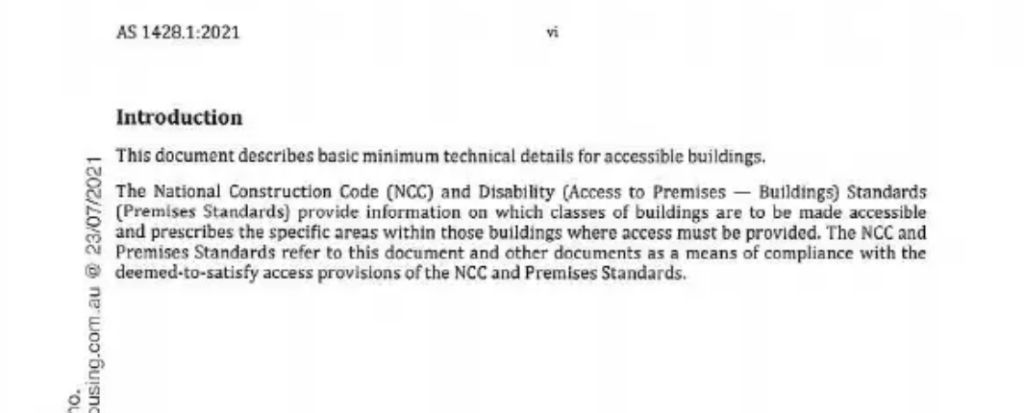
1. General Stair Requirements (Non-Spiral Stairs)
- Riser Quantity: Each flight should have at least 2 risers but no more than 18 risers.
- Riser Height: Must be between 115mm and 190mm.
- Going Width (Tread Depth): Must be between 240mm and 355mm.
- Stair Slope Rule: Follow the formula 2R+G, where:
- Minimum Slope: 550mm
- Maximum Slope: 700mm
- Landing Requirement: Landings must be at least 750mm in length. If the landing changes direction, measure at least 500mm from the inside edge of the landing(abcb-housing-provisions…).

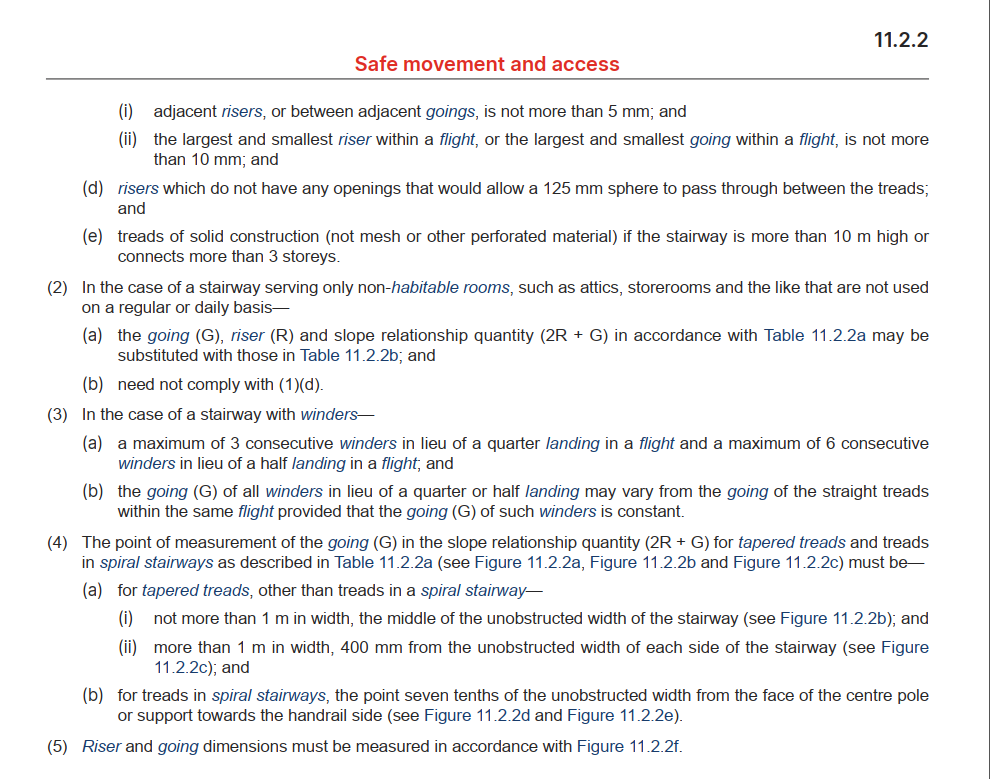
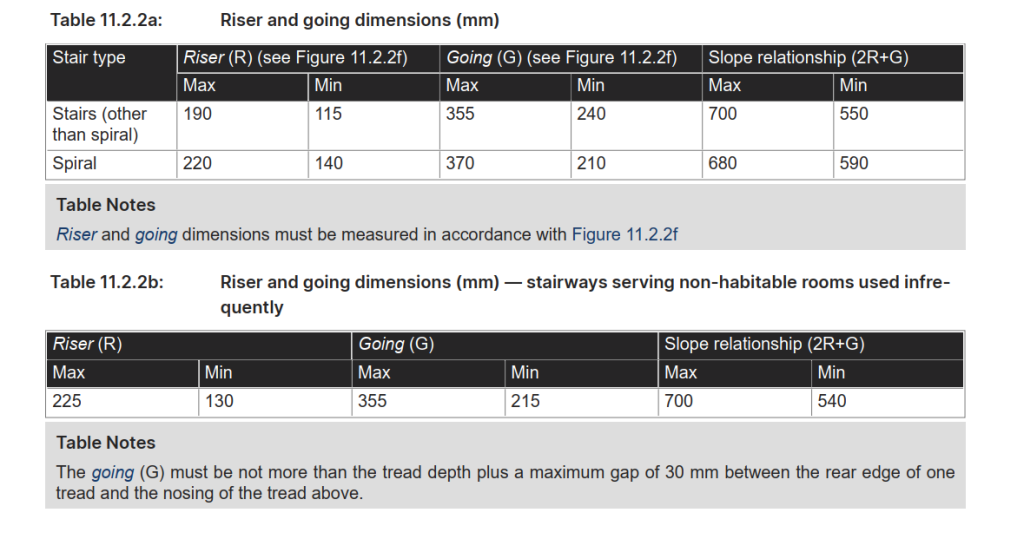
2. Spiral Stairs Specifics
- Riser Quantity: Similar to regular stairs, spiral stairs must have at least 2 risers and no more than 18 in each flight.
- Riser Height: Must be between 140mm and 220mm.
- Going Width: Must be between 210mm and 370mm.
- Stair Slope Rule: Use the formula 2R+G with the following limits:
- Minimum Slope: 590mm
- Maximum Slope: 680mm(abcb-housing-provisions…).
3. Landings Specifications
- Minimum Length: Landings must be at least 750mm in length.
- Directional Change: For landings with a change in direction, measure at least 500mm from the inside edge.
- Gradient: The landing slope must not exceed 1:50 to ensure levelness while allowing for slight drainage.
- Threshold Requirement: A threshold landing is required where there is a floor level change of more than 570mm or three risers(abcb-housing-provisions…).
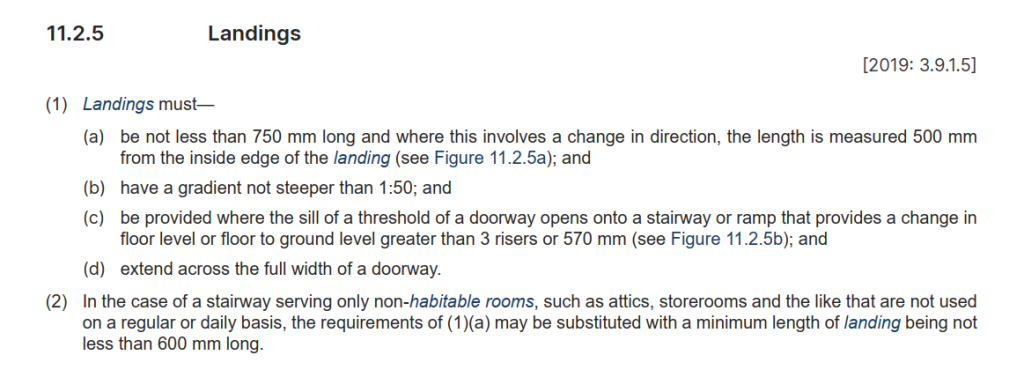

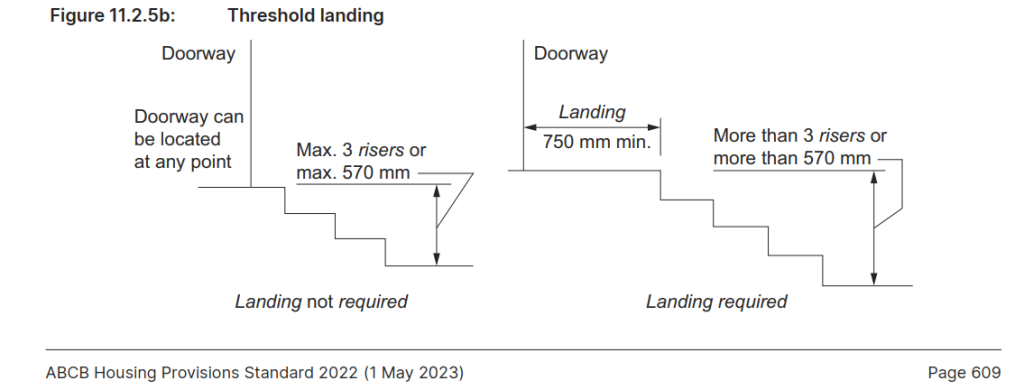
4. Slope and Safety Measures
- The 2R + G formula is essential for the slope and safety of both standard and spiral stairways, ensuring each stairway is easy to ascend and descend.
- Open Risers: Risers must not have openings wide enough to allow a 125mm sphere to pass through, minimizing the risk of small children or objects falling through.
- Tread Solidness: Stairs that are taller than 10m or connect more than three floors must have solid, non-perforated treads for additional safety(abcb-housing-provisions…).
5. Consistency in Dimensions
- Uniformity Across Flights: All risers and goings within each flight should be consistent.
- Permitted Variations: Adjacent risers and goings may vary up to 5mm, but the difference between the largest and smallest within a flight should not exceed 10mm(abcb-housing-provisions…).
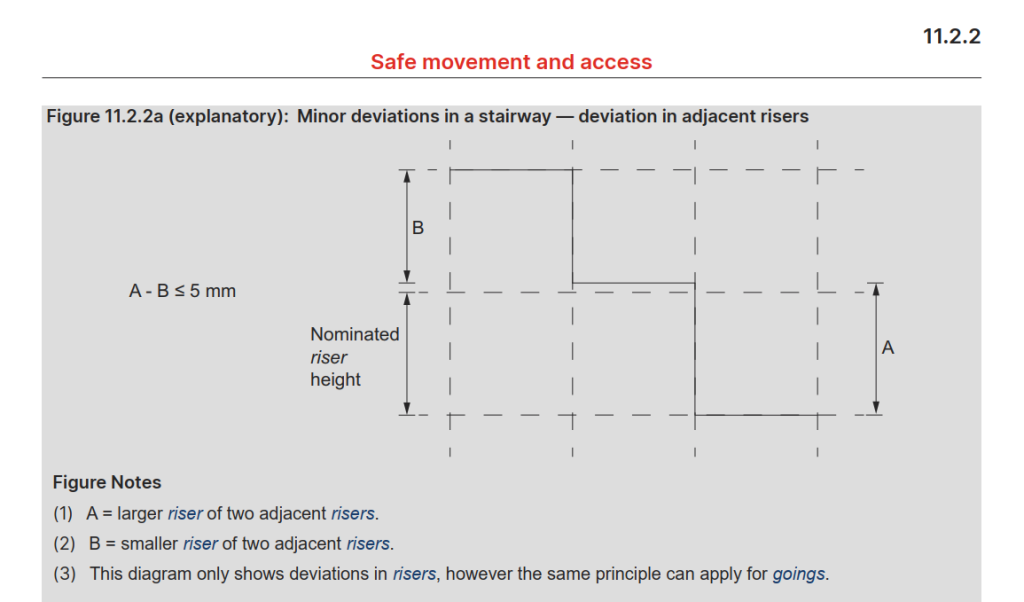
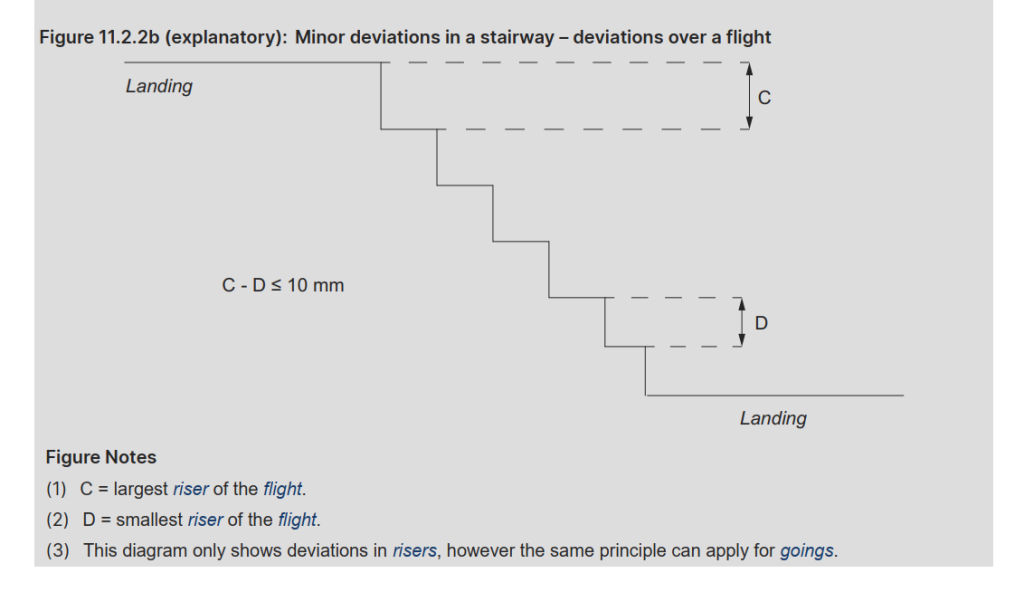
6. Slip Resistance Requirements
- Slip Resistance Testing: All treads, landings, and ramps should meet slip resistance classifications as per AS 4586. This includes:
- Dry Conditions: Minimum P3 or R10 for treads; P3 for nosing or landing edge strips.
- Wet Conditions: Minimum P4 or R11 for treads; P4 for nosing or landing edge strips(abcb-housing-provisions…).
7. Barriers and Handrails
- Barrier Height: Barriers should be at least 865mm above the nosing of stair treads, and 1m above landings and other access surfaces.
- Handrails: Must be placed on at least one side of the stairway, running the full length of each flight and at a height of no less than 865mm.
- Opening Limitations: No opening in the barrier should allow a 125mm sphere to pass through(abcb-housing-provisions…).
By following these steps, builders and architects can ensure that commercial stairs meet the safety and accessibility requirements established in AS1428.1 and the ABCB Housing Provisions Standard 2022.
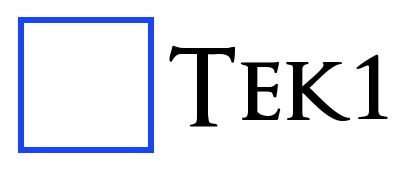
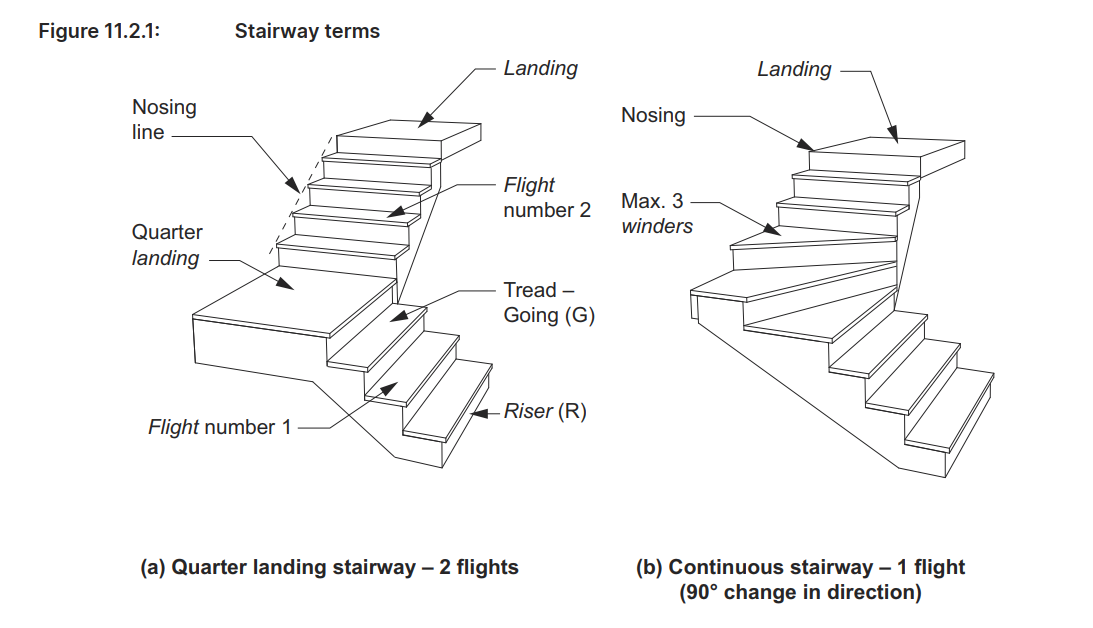
Leave a Reply